Since 2019, Google’s affordable smartphone series has progressed and improved in almost all areas. After four years of updates and very few misfires, the Pixel 8a is the fully evolved final form. Here’s what it’s like to use for an extended period.
Hardware and design
I love the move to a matte finish on every facet of the Pixel 8a. Speaking to people about the 8a, there seems to be a bit of consensus that plastic making a comeback is something we’d like to see. Google made a conscious effort to strike a nice balance. Honestly, I’d be fairly happy if the Pixel 8 Pro used the same material, as it doesn’t drastically cheapen the hand feel.
The huge benefit is that, for the first time in a while, I was happy to use the Pixel 8a without a case. I’ll openly admit that the matte black model is a little plain for my taste, so I have used some cases to add some color. In comparison, the Aloe that my colleague Abner Li has been using is as refreshing and soothing as its namesake. There’s almost a neon aspect to the green that stands out nicely.
You might not need to use a case because it can handle a beating. I’m coming around again to the idea of flagships using high-quality plastic finishes rather than glass or metal. I can see the 8a fairing really well into the future like the 3a, 4a, and 6a before it.
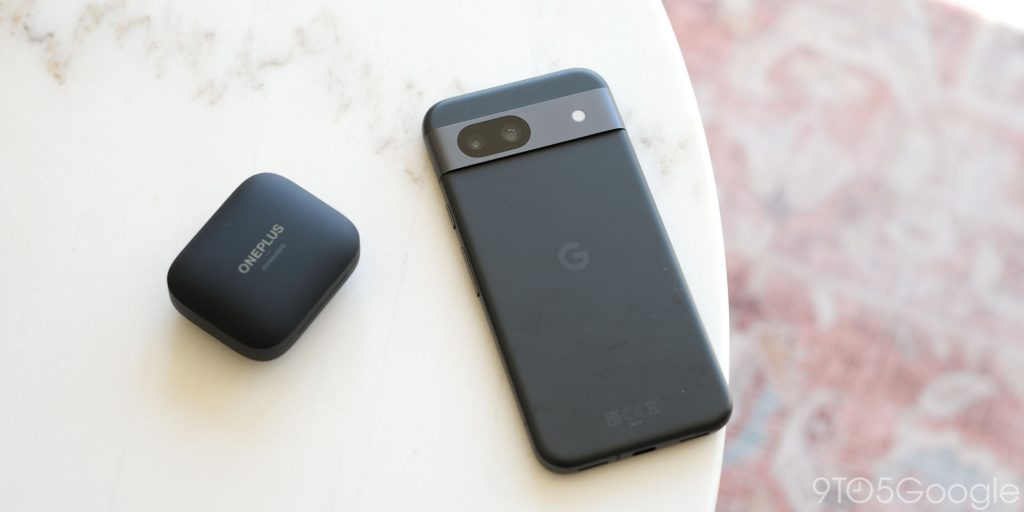
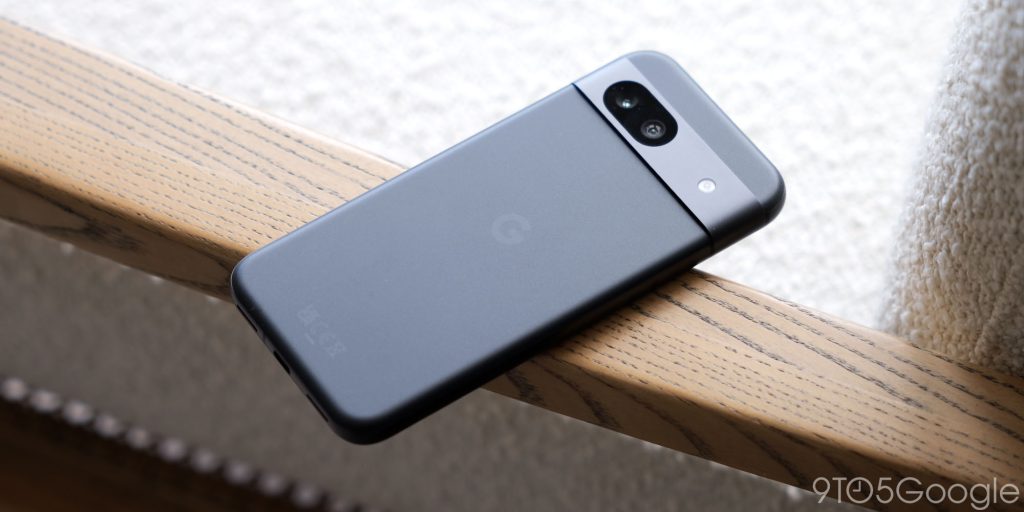
While I dream of the pocketability of the Pixel 4a, the 8a is comfy with a chassis that feels dense and weighty. It’s probably the most comfortable Pixel since the Pixel 5, but it is a little chunky compared to that device. It’s actually more rounded than the regular Pixel 8 – which I think helps greatly.
Thick bezels are not a huge pain point for me, but they are noticeably larger than those of many other affordable phones. This is more pronounced on the black model, which has a gray metal frame. It could also be the rounded sides. At least it’s completely flat.
Apart from the bezels being a little chunky, the screen is excellent. At 6.1 inches, there’s lots of real estate to utilize. The huge maximum brightness jump makes the Pixel 8a easier to use in any environment. One gripe I have is how the 8a handles display luminance.
The individual brightness increments are strange because they jump up massively from around 80%. I can get really dim or really bright. The middle section varies wildly. I’m constantly adjusting manually, as the auto-brightness settings can also act up. It’s a little annoying as the display is just a minor step below the regular Pixel 8. It is genuinely excellent and a joy to use for all types of content.
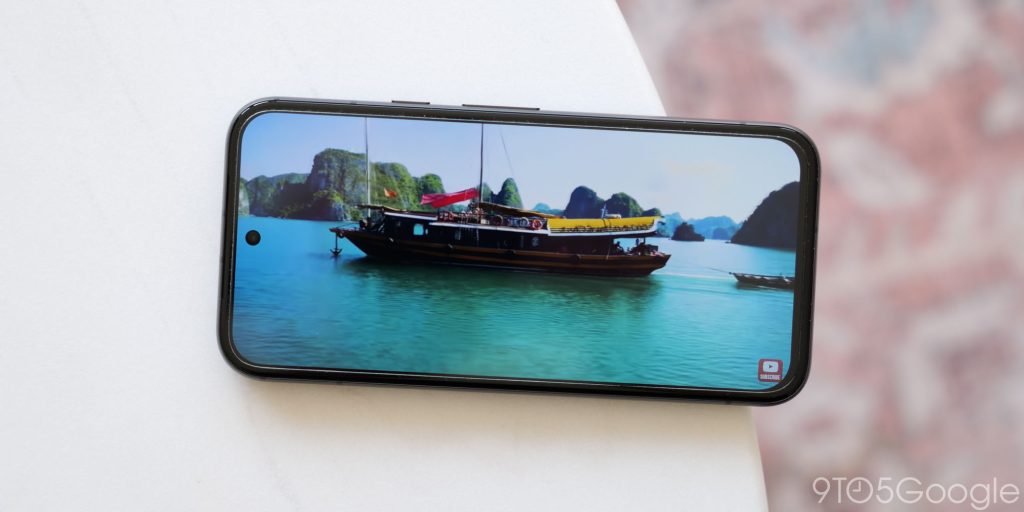
The 120Hz refresh rate also feels like the final evolution of an A-series smartphone screen. Just remember to enable it, as the Pixel 8a defaults to 60Hz out of the box. Android 14 is made for this, with smooth, clean animations and a cohesive feel in all areas. It is backed by speakers that have a lot more oomph than I expected. Music, podcasts, and movies sound great, but I’d still use headphones if you want the best experience.
Last off the list of the neat stuff I’ve noticed is the haptics have improved again here. There’s a nice thud when typing or tapping. Only OnePlus or Oppo offers better vibration-based feedback on a device in this price range.
Software and performance
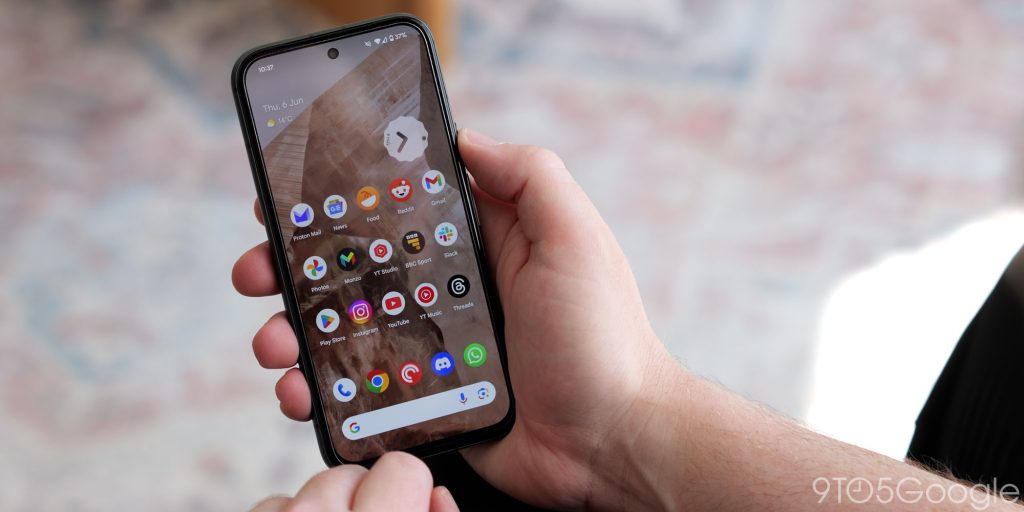
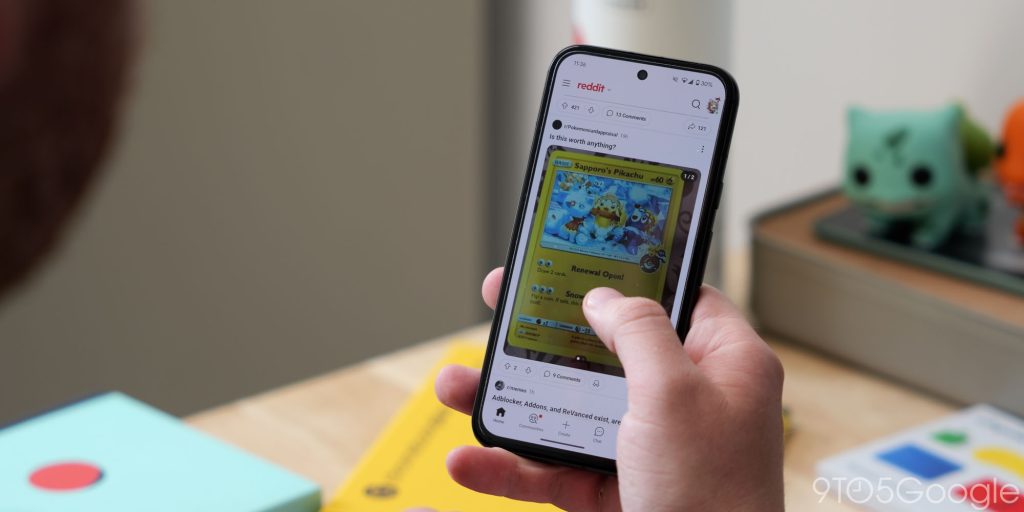
The Tensor G3 isn’t a true-blue flagship chip. It’s better suited in the upper mid-range arena. This is where the Pixel 8a has the upper hand on lots of so-called challengers. Of course, there are objectively more powerful mid-range phones in lots of global regions, but not many will be exponentially more powerful.
I haven’t specifically noticed any outright throttling, but occasionally, I notice some random warm phases. During the initial setup phase, the device was hot to the touch, and when installing lots of applications, it can get warm. Oddly, I didn’t notice the same when testing out Call of Duty Mobile and when roaming recently. Those two tasks would increase the heat of most of my Android devices though.
The main thing you need to know is that, day to day, I have been unable to tell the difference between the performance levels of the 8a and the 8 and 8 Pro. They’re practically identical, which is always the biggest bonuses with Pixel A-series devices. You are getting a flagship-level software experience without any compromises. That said, when gaming you can’t hit 120fps on lots of titles because the Tensor G3 doesn’t have quite enough overhead for that.
All of the core AI-powered modes make the jump down the totem here. If I’m being honest, I only really use the AI wallpaper function. Magic Editor and Audio Magic Eraser are not things I would use often, but I am glad they’re here because it’s great to have the options on a mid-ranger like this.
Gemini Nano is also promised as part of a future Feature Drop which will allow for some more on-device AI processing. At the moment, things are kept simple. There’s a lot to be excited about when it comes to the software stack. Personally, I’m enjoying using this as a testbed for the Android 15 Beta.
The Pixel 8a even has a couple of timed-exclusive features. There is a Snapshot widget that just lets you take a quick photo. The latest picture you have taken then lives as a pinned Polaroid-style widget on your homescreen. It’s fine, but very much a gimmick.
You might not realize that the 8a is the only Pixel device that has battery charge cycle information as a standard. This was unceremoniously removed in the Android 14 QPR2 update, but it will only return to future Pixels moving forward.
Camera
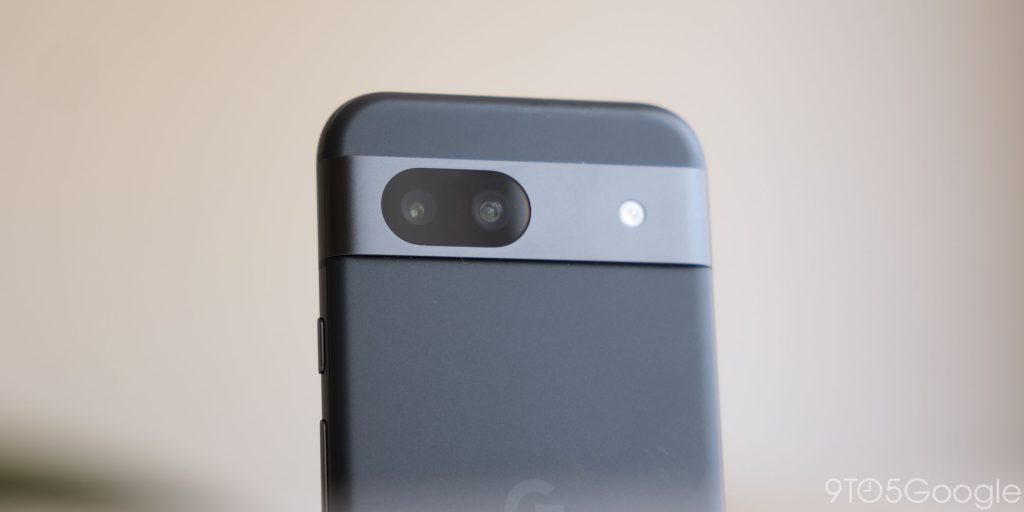
My bold take on the Pixel 8a is that there isn’t a camera at this price point that offers as much bang for your buck. Sure, it’s identical to last year’s Pixel 7a, but that doesn’t stop the 8a camera system from being about as good as it gets for under $500.
The 64-megapixel main sensor is super flexible, and the textbook Google tuning helps elevate the quality of your stills. Even when you punch in and utilize the digital zoom, the quality doesn’t degrade drastically. The dynamic range is right up there with the best, and contrast is also handled well. Focus fall-off makes close-up images look great with tack-sharp details where it matters.
For me, the Pixel camera experience is unmatched, from the ease of use to the quality of the images you end up with. The Pixel 8a is absolutely no exception, even if it has no upgrades over last year’s handset. You’re getting reliability and consistency, which might not seem that important on paper but are essential when you have seconds to snap a lifetime memory.
What little video recording I’ve done has been visually pleasing, but it lags behind the Pixel 8 and 8 Pro. Sometimes, colors look a little off and leave videos feeling a little synthetic. In isolation this is fine, but it’s something to note because it does make 8a video standout compared to it’s series siblings.
Nitpicking aside, one of the best things about the Pixel 8a is that anyone can use it and get great photos and videos without worrying about overly complicated modes and settings. The results speak for themselves.
Battery lifespan and longevity
At no stage living with the 8a over the course of a month have I felt disappointed or frustrated by how long it lasts. Even with some heavy GPS use while travelling the battery percentage doesn’t drop like a stone. I have been a little annoyed at the slow charging speed, though.
I have zero qualms with the wireless charging at 7.5W, which is absolutely fine because that means less heat and battery stress. 18W is just not that fast for a phone of this size. Plugging in, as I do in the morning, takes far too long. Well, over an hour and 30 minutes if your phone is dead to get back to 100%.
I can’t complain at the lifespan. Once charged, the almost 4,500mAh battery is enough to do almost everything you can throw at it. Just know that you will wait a long time to get topped back up when it dips to the low levels.
Final thoughts
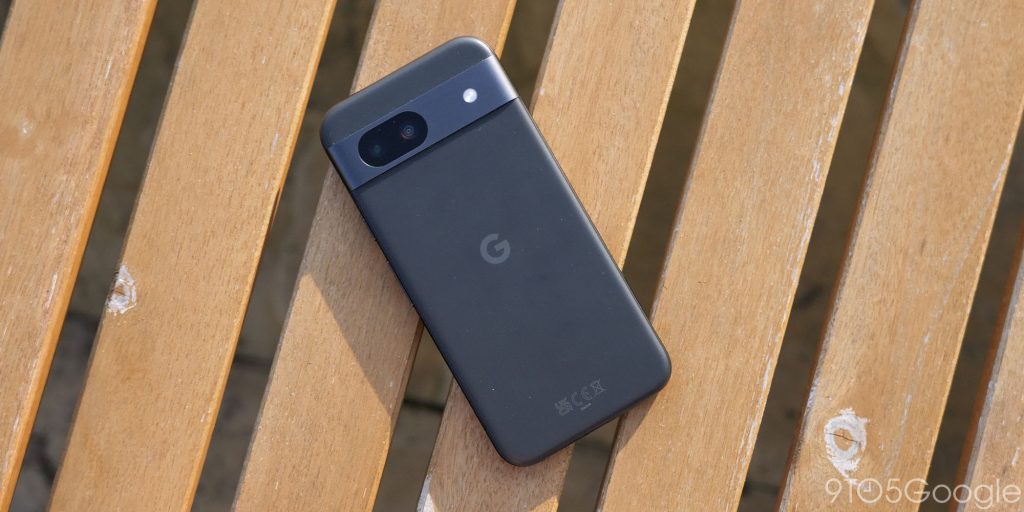
Having used the Pixel 8a as my main device for the better part of a month, simply measuring the Pixel 8a without the looming shadow of the Pixel 8 has been really difficult.
Kudos to Google for constantly improving the A-series, but all of the incremental improvements now make it a fringe device sitting on the shoulders of the regular Pixel flagship lineup. This is the first time that the A-series has felt out of place because of those improvements.
It is far from a bad product. In fact, it’s the best A-series phone due to improvements in several key areas. Last year, given the existence of the regular Pixel 7, I had similar mixed thoughts about the Pixel 7a. The 8a steps up once again with a better display, battery capacity, design, and even with increased storage options. Those improvements mean that in isolation, the Pixel 8a is a great buy.
The most obvious pain point is that by getting closer to the base model in the flagship lineup—as an A-series fan—I’m sorry to say the 8a feels a little pointless. It signals to me that Google has finalized the A-series and wants to send it off into the sunset while subconsciously telling people that the Pixel 8 is where they should be spending their money
There could be an argument that it will be the perfect entry-level handset to buy because the 8a will likely hang around for a little while longer when the Pixel 9 arrives.
Putting that future aside for a second, the Pixel 8a is a fine phone—a good phone that came out at the wrong time. As the price drops, it’ll become a better buy—something that can’t always be said of Android phones in general. Because it’s supported for a long time, it’s a better buy the cheaper it gets.
Ordinarily, I would keep my SIM in the latest A-series phone until the next flagship release. For the first time in a few years, that isn’t going to be the case. Is that an indictment of the 8a? I’m not sure, but I’m not as confident that fans should buy this version for the first time in a while unless you can score a discount on the $499 launch price.
Get the Pixel 8a
FTC: We use income earning auto affiliate links. More.
